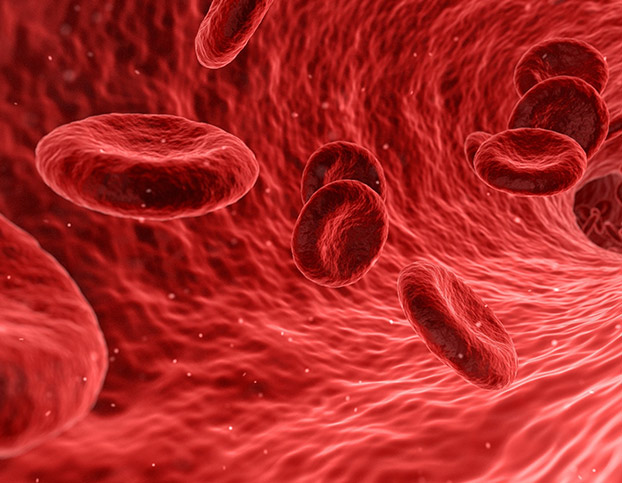Have you ever wondered about all those amazing blood cells circulating throughout your pet’s body? Read on for 10 facts about these cell workaholics that you might not know.
- There are millions red blood cells (RBCs) in every microliter of blood in your pet’s body. That equates to trillions of RBCs, making them the most common cell type in the body. Your pet has more red blood cells than there are people on Earth.
- The primary job of RBCs is to carry and deliver oxygen throughout the body. The oxygen is picked up when the RBCs travel through the blood vessels of the lungs. After your dog’s body cells use the oxygen, carbon dioxide is formed which is then transported by RBCs back to the lungs to be exhaled. Think of the RBCs as taxis for oxygen and carbon dioxide.
- Hemoglobin is a protein inside the RBCs that bind oxygen. Hemoglobin contains iron and it is the hemoglobin that gives blood its red color. This is where iron supplementation helps for certain types of anemia.
- The medical term for too few RBCs is “anemia”, the term for too many RBCs is “polycythemia” and the medical name for RBCs is “erythrocytes”.
- Your pet’s superficial blood vessels just under the skin may look blue, so does that mean your pet has blue blood? So-called venous blood is not blue, it is still red. The appearance of blue veins is an optical illusion related to the visual wavelength of colors (blue, green, red) through skin. Think about the last time you had your blood drawn for testing or donation. If you weren’t too squeamish to look, you saw dark red blood (coming from a bluish vein).
- Some species do have blue blood: some arthropods (horseshoe crabs, snails, lobsters) and spiders have blue blood due to their “hemocyanin” which contains copper, instead of mammal’s “hemoglobin” which contains iron.
- RBCs are made in the bone marrow and, when matured, are released into the circulatory system. The kidneys have the job of directing the production of RBCs through hormone signaling sent to the bone marrow. The kidneys make and release erythropoietin to accomplish this. Anemia caused by kidney failure is due to reduced production of erythropoietin.
- Mature circulating RBCs from dogs and cats do not normally contain a “nucleus” which is different from the RBCs of fish, reptiles, amphibians and birds whose do contain a DNA-laden nucleus. Under certain abnormal conditions, (e.g. severe anemia, certain poisonings) nucleated RBCS (nRBCs) may be seen in the dog blood stream, but they are generally absent in healthy dogs and cats. When still within the bone marrow, developing RBCs do have a nucleus, however, the nucleus is discarded prior to release into circulation.
- RBCs have a finite lifespan. Every second of every day, RBCs are reaching the end of their normal life span and are being quietly replaced. In dogs, the average life-span is 110-120 days, and for cats it’s 65-75 days.
- Like humans, dogs and cats have their own blood types which are different from each other (and different from human’s). A blood test can quickly determine the blood type. Knowing the blood type is extremely important when donating or receiving a blood transfusion.
Do you have concerns about your dog or cat’s health? Contact us, you do not need a referral to meet with and discuss your pet’s health with one of our specialists.

Author:
James Woods DVM, MS, DACVIM (SAIM)
Ph: (912) 721-6410
Contact Us
